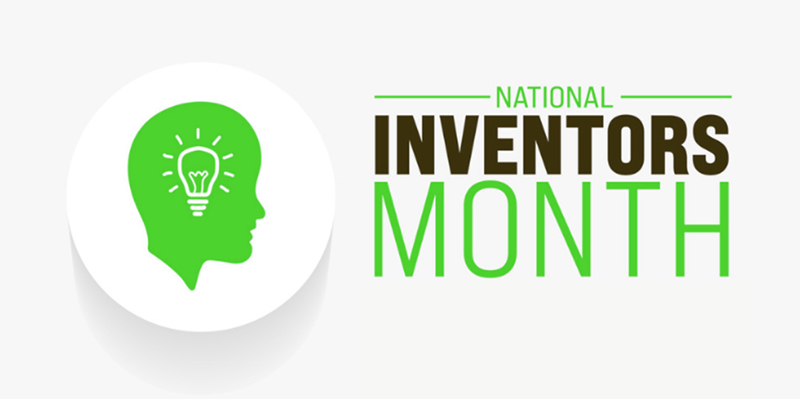
To commemorate this year’s National Inventors Month, we invited young innovators to show us how they’ve been inspired by inventors and creators by sending us their own imaginative works of science, engineering, and discovery.
Check out their submissions and learn more about the budding inventors shaping our future.

By Tormund A.
Tormund isn’t just a fan of helicopters — he builds them. Or at least, he dreams up amazing ones that could one day change how we fly. For Inventors Month, Tormund proudly submitted blueprints for what he calls: The Triple Hybrid Helicopter 4X54.
It’s not your average flying machine. This one is powered three different ways — oil, steam, and even by pedaling! According to Tormund, this gives pilots more options, better control, and a whole lot more fun.
Here’s how it works:
First, the turbine engine can be filled with either oil or water. The liquid you choose powers the helicopter by connecting directly to the main propeller blades. That’s when the real action begins — the fan starts to spin, the propellers roar to life, and liftoff is just around the corner.
Need power from oil? Just turn the goldish brown knob. Want to switch to steam? Turn the blue knob. But that’s not all.
There’s a third option — and this one’s powered by you! Tormund added a feature called the Air Forger button. When you press it, it activates the back tail rotor, but only if you're pedaling like crazy. The faster you pedal, the faster the back wheel spins. Once it’s going fast enough, the helicopter’s wheels fold in, and whoosh! — up it flies into the sky.
It’s part machine, part muscle, and totally one-of-a-kind. So if you’re out of oil and steam, you can still fly — as long as your legs are strong!
Inventive, bold, and built for adventure, the Triple Hybrid Helicopter 4X54 is Tormund’s way of showing that flying machines don’t have to follow all the usual rules. And in the skies of the future, there might just be room for a helicopter that runs on fuel, steam, and pedal power — all thanks to an inventor with big ideas and even bigger dreams.
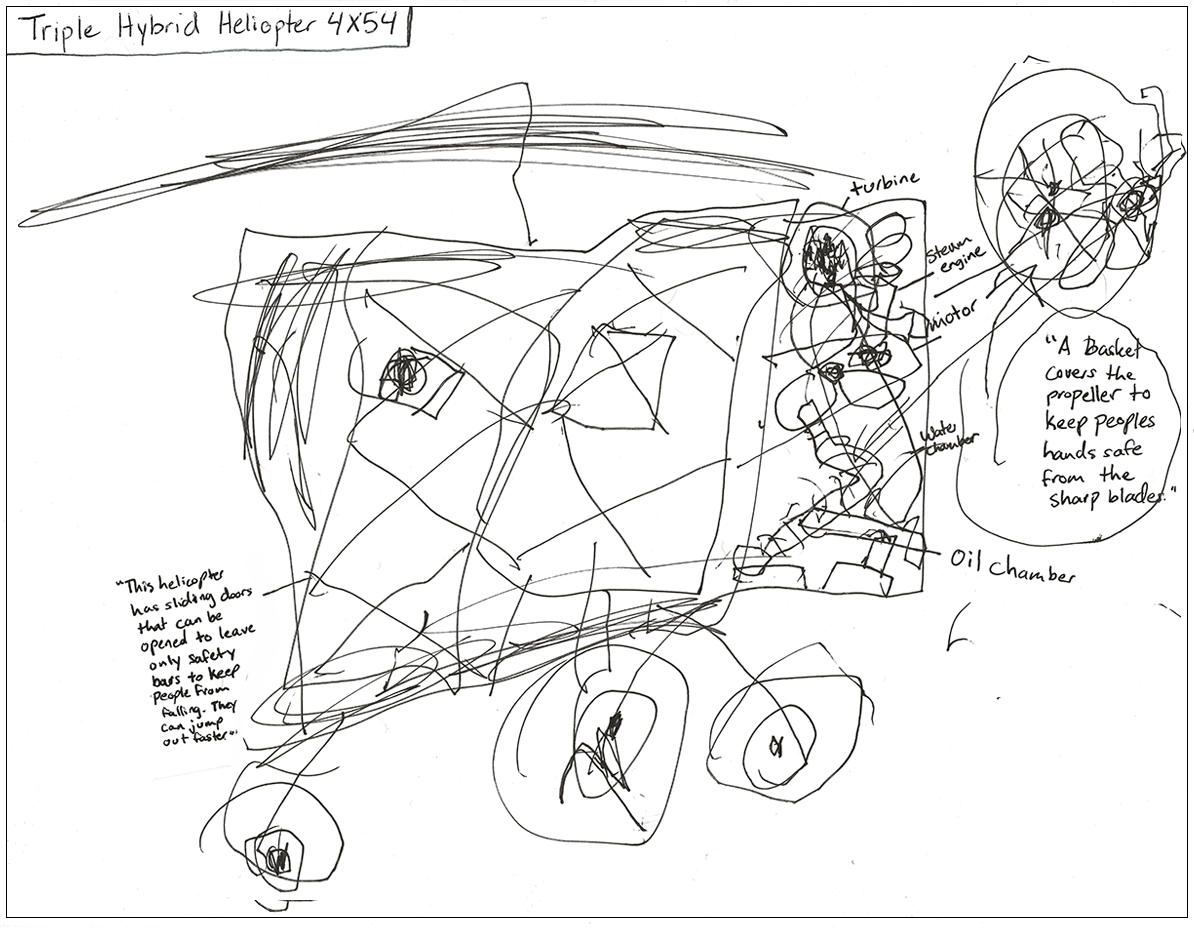

By Ryan K.
Ryan has always admired inventors — especially the ones who made everyday life better. But if he had to choose just one hero, it would be Benjamin Franklin.
So Ryan started thinking about concerns he sees in his own life. One stood out right away: his mom.
That’s when Ryan had his big idea: a microwave that makes food healthier without changing how it looks or tastes. He calls it: The Thick-to-Normal Microwave. “It’s a special kind of microwave,” Ryan says. “It helps people eat what they love — but with less fat, carbs, or sugar.”
Here’s how it works:
You put your food in a microwave-safe bowl or plate and slide it into the Thick-to-Normal Microwave.
Then you pick which thing you want to reduce: carbohydrates, fat, or sugar.
You use a slider or buttons to choose how much to take out — 25%, 50%, or even 75%!
Press start, and the microwave works its magic.
When it’s done, your food still looks, smells, and feels almost the same — but now it’s better for your body!
Ryan says one of his favorite examples is spaghetti. “If my mom picks 50% carbs, the microwave zaps out half the carbohydrates,” he explains. “It still tastes like spaghetti. She still feels full. But it’s healthier!”
He’s even thought about adding a special button called “Nutrition Boost” that adds extra vitamins or fiber while cooking.
Ryan hopes his invention can help people eat smarter without giving up joy. Food should still be fun, he believes, but if we can make it healthier without changing it too much, that’s a win.
Benjamin Franklin would definitely approve.
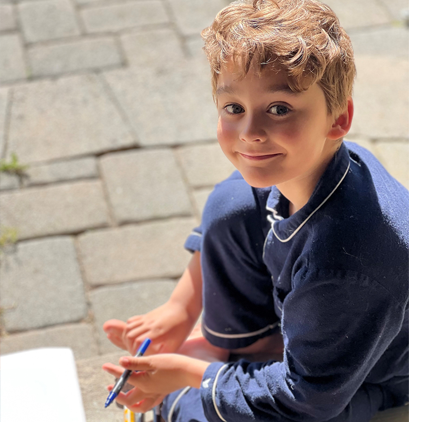
By Wade R., Age 5
Wade Redmon is five years old, and he already knows exactly what he wants to be when he grows up — a doctor who helps people with heart problems. He’s been learning all about how arteries work, and how something called plaque can build up inside them, making it hard for blood to flow. That can lead to heart attacks and strokes.
But Wade had an idea — a big idea.
One afternoon, while reading about clogged arteries, he thought, What if there was a tiny machine that could go inside your body and clean out the plaque, just like a vacuum or a train on a mission? That’s when he invented something brand new:
The Nitrogen Nanobot Train.
“It’s a little train made of nitrogen molecules,” Wade explained. “It travels through your bloodstream to clean up all the yucky plaque that blocks the blood from moving.”
He even drew pictures to show how it works.
In the first picture, the train is being injected into a person’s vein using a syringe. Once it’s inside, it finds the big clump of plaque and latches on with a claw at the front — just like a tiny grappling hook. The train breaks up the plaque and stores it in the back section as it travels along.
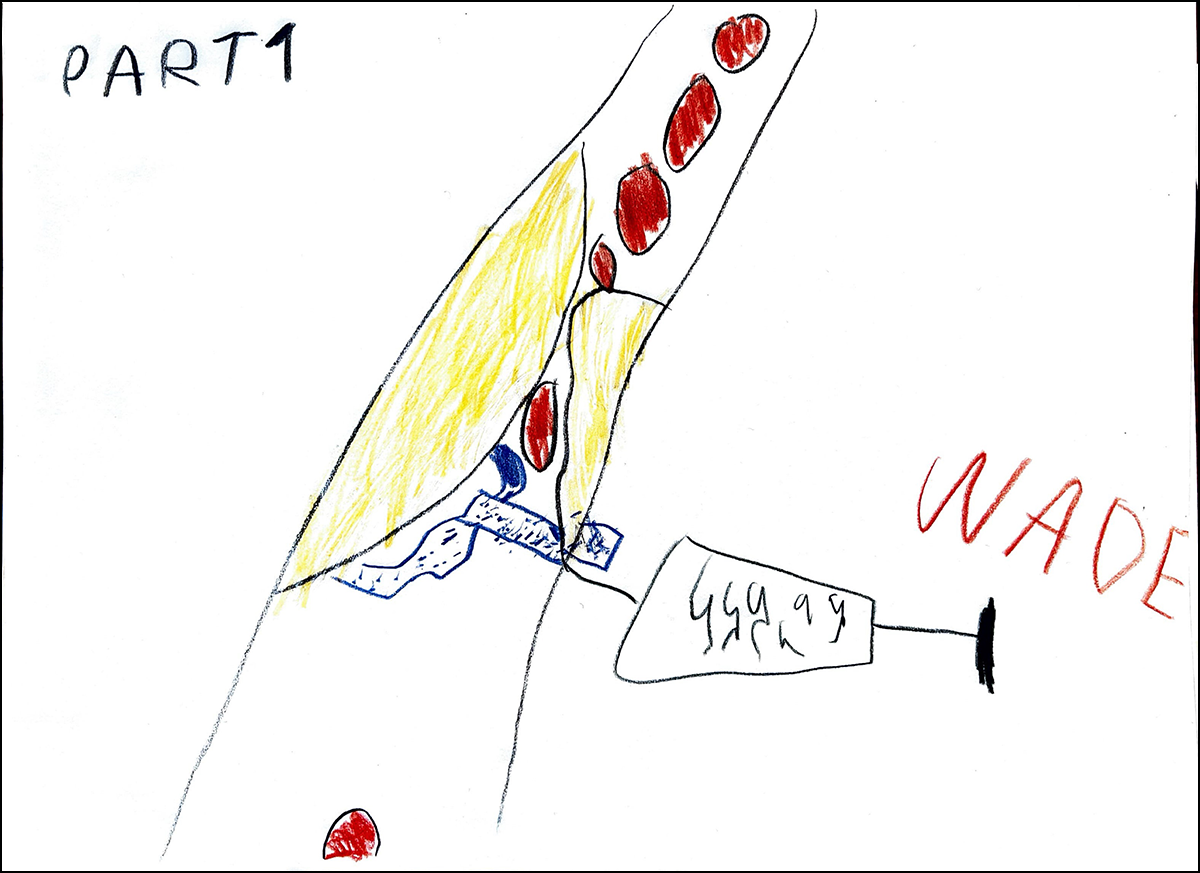
In the second picture, the train is deeper inside the artery. Now that the plaque is being removed, the blood can flow freely again. But that’s not all the train can do — it also searches for any red blood cells that don’t look normal. If it finds one that might turn into a blood clot, it gobbles it up before it can cause trouble.
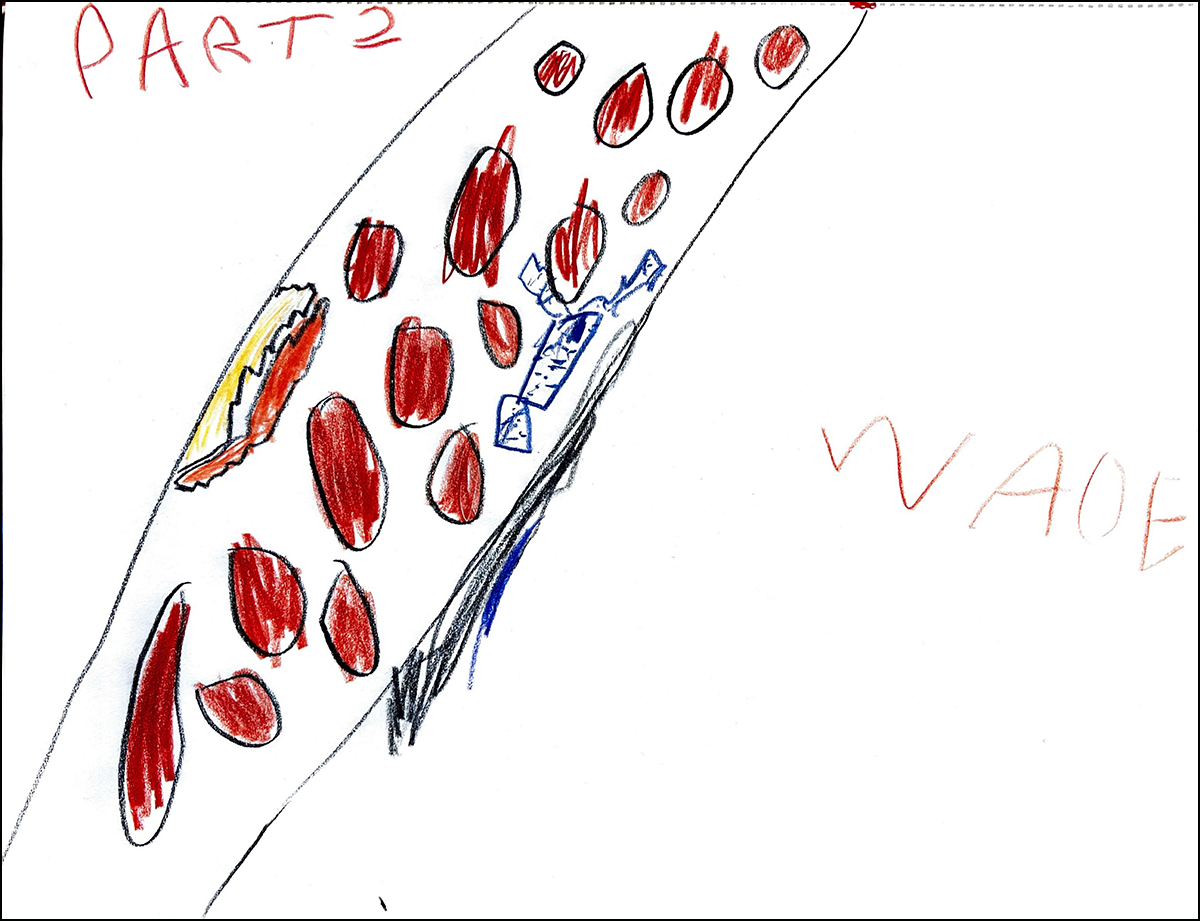
What makes Wade’s invention extra special is that the train doesn’t leave the body.
“It stays in your veins forever,” he outlined, “like a tiny doctor living inside you. If new plaque shows up, the train is already there to fix it. You don’t need daily medicine or surgeries.”
Wade hopes his invention will help people with heart disease live longer and healthier lives. He loves science and medicine, and he’s always thinking up new ways to solve problems.
The Nitrogen Nanobot Train is just the beginning.
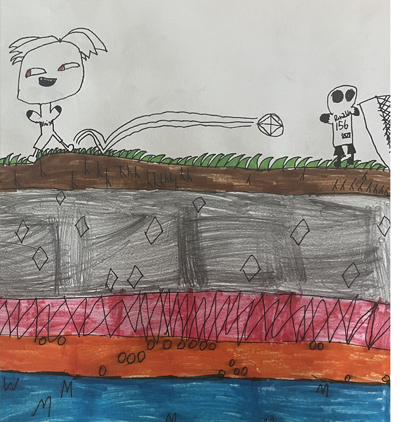
By Blaise H.
Blaise has always been fascinated by creating things that don’t yet exist — especially ideas that come entirely from his imagination. So when he started building a brand-new language, he didn’t turn to books or apps. He started from scratch.
Blaise's language is called Basel — pronounced Baseeel — and includes its own alphabet with different symbols, and letters pronounced in a totally new way. He's creating a whole dictionary with words and translations from English into Basel.
Every part of the language — the sounds, the writing, the meaning — is Blaise’s own invention. No one helped him. And that’s part of what makes it so special.
But Blaise didn’t stop there.
Since December, he’s also been working on another big project: a Geometry Dash Encyclopedia, featuring different level makers, gameplay, difficulties, and characters.
Just like with his language, Blaise is building the encyclopedia piece by piece — collecting details, organizing information, and inventing his own way to understand something he loves.